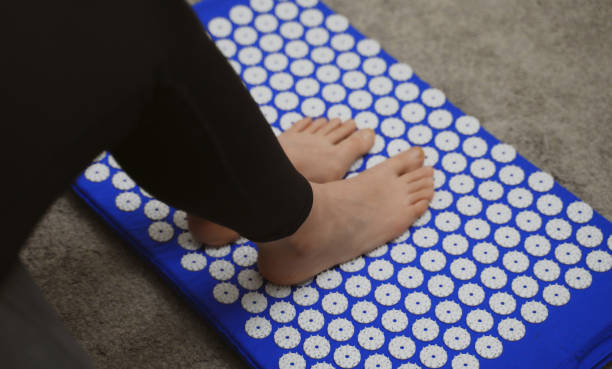Standing is an easy task that your body can do without much thought, effort, or planning.
Standing for long periods can be a tedious task. The problem gets worse if you have to stand in the same spot for long periods of time.
You may be a baker or a cashier at a retail shop who is familiar with the pain in your knees, back, and feet from standing for long periods of time.
Investing in a mat that reduces foot pressure can reverse these musculoskeletal problems.
A premium anti-fatigue floor mat is expensive, which can be a problem for those who are strapped for money.
This article will show you how to make anti-fatigue mats at home using a rug pad.
We’ll also answer questions commonly asked about mats and look at the factors to take into consideration when purchasing or making them.
What is an anti-fatigue mat
Anti-fatigue mats are unique mats with shock-absorbing features that increase support for the body and reduce any discomfort or pain experienced when standing for long periods.
What is the purpose of anti-fatigue mats
The muscles in your legs and feet tighten when you walk on a hard surface. Blood circulation slows down, and fatigue sets in because of low oxygen levels in the brain.
Muscle cramps can cause your feet to feel achy, particularly near the heels and toes.
You may even suffer from persistent lower back pain.
These mats are designed ergonomically to provide better support for the body while standing, reducing such risks. These mats absorb shock and reduce stress when standing or walking.
The benefits of the program include:
Cushion the joints, toes, and heels of your feet.
Improve blood circulation to prevent varicose venous disease
Improve lumbar spine support to reduce back pain
A comfortable working environment allows you to work longer.
For a standing desk
Standing desks are known to boost productivity by improving mood and energy.
Standing for long periods can cause swollen ankles and lower back pain.
A lethargy-reducing floor mat will not only increase your comfort but also give you the energy to work longer.
It is softer than a flat, hard surface and allows for better blood circulation.
The kitchen
Standing on a hard surface while cooking or doing the dishes will cause your body to be strained. The legs, knees, and back can be affected if the standing periods are long.
The use of an anti-fatigue pad stimulates the foot and leg muscles, increasing blood flow. A better blood flow can reduce muscle cramping, and fatigue is reduced as the brain receives enough oxygen.
Back fatigue
Standing still for long periods of time can cause back fatigue. Anti-fatigue mats encourage you to constantly move and change your standing position.
By changing standing positions, the body’s weight and stress are distributed equally across all back muscles rather than just a few.
Sore feet
Standing on a surface that is hard with sore, aching feet can be painful and uncomfortable.
However, a lethargy mat absorbs the shock of standing and relieves soreness. It is softer on the feet and encourages blood circulation.
Better posture
Standing on a hard surface limits the postures your body can adopt without decreasing your productivity.
A mat that reduces fatigue allows you to adopt more positions without affecting your energy.

